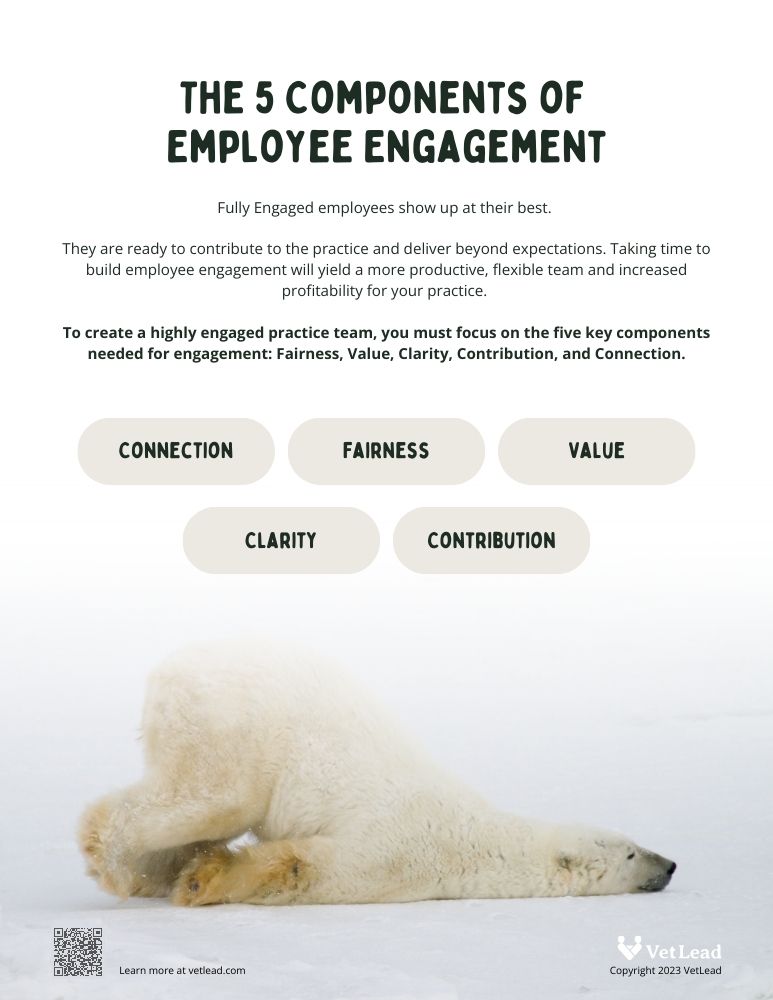Very few veterinary managers show up to work thinking, “Today I’m going to cause my team to disengage and demotivate them.”
Yet many supervisors spend a great deal of their time doing exactly that. It may not be their intention, but if you observe them, talk to their teams, and look at the results they cause, it is exactly what happens.
So, how do managers create the gap between what they want to happen and what they actually cause to happen? If you watch them, you will notice how their actions ultimately create different results from the ones they want.
Share Your Expertise, But Let Them Learn

Lots of supervisors have been promoted from within to a leadership role. Often times this means they are now managing people who do the job they used to do.
In these situations, the manager often believes that he or she was promoted because of their expertise in the role. Sometimes this is correct - which could be part of the problem.
Become Great at Leading Your Veterinary Team
However, in this new role, this person needs to become great at leading, not great at doing. The manager goes about the day believing their role is to tell others how to do their job. Is anyone motivated or engaged in an environment where the boss is micromanaging them on a regular basis?
Not likely.
As a leader, your job is to create capability, make people better, help them learn, and ultimately reach their potential. No part of that is about telling them how to do things. Rather, help employees by letting them try, make mistakes, chart a different course, and try again. They need your guidance, your questions, and your support, but not your answers.
Speed is Less Important than You Think

The reason most managers take shortcuts when interacting with their teams is that they simply believe it will be faster to just tell people what to do. They may even think that telling their team harder or raising their voice helps things happen more quickly.
Here’s the scary part: it does. It also destroys engagement.
Aggression is the quickest way to behavior change, but it is not sustainable and it kills culture. The best performers simply will not put up with it for long. As a result, they will leave for a place where they can grow, thrive, and reach their potential. We know that in our practice, speed matters. But, it matters less than direction.
Take the Long View with Your Veterinary Team
Where will your team be in six months or a year? Will they be a high-performing, fully engaged, adaptable group? Or will they be a bunch of mediocre employees who wait for instructions from you, try not to get caught doing anything wrong, and show up with little enthusiasm for their job?
The answer to that question is far more important than how fast they finish their immediate task. As a manager, you have to prioritize the longer-term improvement of the team over today’s self-imposed urgency.
"My Way" isn't the Only Way

This one is interesting to watch as I work with managers who are trying to create engagement. They will work towards engagement, then immediately sacrifice it rather than let someone solve a problem without their help.
There is an overpowering need for many managers to implement their own solutions even if the ones their team came up with might work better. I watch time and time again as managers take ideas away from the team and change them. This sends the team a loud and clear message, “Your ideas aren’t good enough.”
Your Veterinary Team has Ideas Too
As managers, we have to remember that our employees are often closer to the problem. As a result, they can come up with better ideas than we do. More importantly, we have to understand that if we only let people implement our ideas, we ultimately retain accountability for making those ideas work.
If we let people create their own solutions, they will have ownership for the solutions and the results they cause. We will get commitment rather than just compliance.

Take your career and your practice to new heights.
Start your free trial membership today.
Final Thoughts
As leaders, we have to deal with the results that our actions cause. While we have behaviors and patterns that are hard to change, we must take a step back and examine them. Then, we must decide what kind of team we want and how we help them get there.
As individuals, we typically hate micromanagement. Yet, we become those very people unless we plan not to be.
Our job is to create capability, engagement, commitment, satisfaction, and help our team and our business reach its potential. We have to examine our actions on a daily basis and see if they are helping us accomplish that goal, or keeping us from it.
The 5 Components of Engagement
Want this complimentary PDF? Print it and put it on the board in your veterinary practice.
Get it here, free. No email address required.
What's the state of employee engagement in your practice? Let us know in the comments below.

This is spot on and applies to any Indio!
So refreshing & truthful!
100%